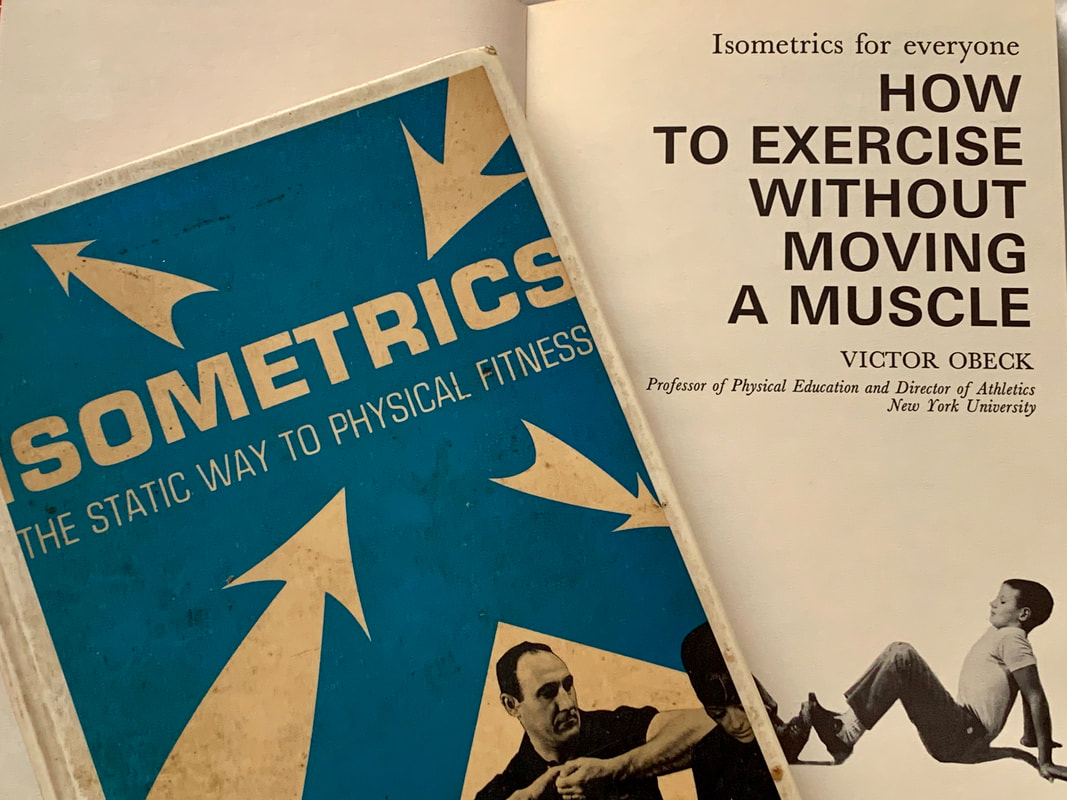|
SEARCH My Blog (Opens in new tab)
How To Exercise Without Moving A Muscle
We've all noticed as we age that we become a little less steady on our feet. This loss is due in the main to the deterioration of our neuromuscular capability to balance. But our fast-twitch muscle responsiveness - or lack thereof - also plays a crucial part.
When we lose balance our fast-twitch muscles act quickly to steady us and put us back into balance. If they are weak, then we potentially take a fall. There's good news. You can rebuild your fast-twitch muscle capability with less effort than you might have imagined.
I've often mentioned how muscle weakness and loss of muscle mass really are a root cause of lack of independence, lack of mobility, an increased likelihood of falling and living five years less.
Our fast-twitch muscles help prevent us from falling, and this speed component of muscle power seems to be an Achilles' heel for seniors. There is a good reason for this. Fast-twitch muscles (our "power muscles") atrophy at a higher rate than our "endurance and strength" muscles. (The latter atrophy at the rate of 3 to 5% per decade after age 30, if you are inactive.) Power declines at a rate of 3–4% per year in older people and this is detrimental for everyday activities such as climbing stairs. What is power? Think of it this way - a bodybuilder has strength and bulk, an Olympic powerlifter has to have strength and power - hence the name. To accelerate a massive weight off the floor requires power. To then hold it up off the floor requires strength. The forgotten low-risk exercises you can do at home
The challenge for older people wishing to rebuild their fast-twitch muscles is that the prescribed exercises are very often too intense.
It's generally thought that you need fast reaction exercises such as plyometrics, to rebuild fast-twitch muscles. This is not the case. Plyometric exercises include jumping onto boxes, star-jumps, burpees and jumping lunges, for example. These are intense, and the risk of losing balance is relatively high if you are starting and have poor balance. Luckily, there is a long-forgotten but effective alternative style of exercises which are effective for fast-twitch muscle development. You may have heard of isometric exercises. While "plyo" means short - which is usually taken to mean jumping - "iso" means "the same". Isometric refers to the tightening of a muscle group without changing its length - unlike when you do a dumbbell curl or a squat for example. In the 60's, isometric exercises were a popular trend, before Jane Fonda became a fitness superstar with her workout CDs. Advocates such as Victor Obeck appeared on TV breakfast and radio talk shows across America. Despite being out of fashion, isometric exercises are still very effective at building muscular strength and endurance, and power - meaning the fast-twitch muscles. That's why athletic coaches still prescribe them. Being fast-twitch muscle only means that it's the fastest to fire and the fastest to fatigue. Trying to build that by moving fast works your momentum much more than your actual muscle. The difference in which muscle fibres you build comes not from your training speed, but your training intensity. With isometrics, you create intensity without the risk of injury from fast movements or from falling during plyometric jumping exercises. This makes isometrics exercises a perfect option to rebuild your fast-twitch muscles. Four isometric exercises to rebuild your fast-twitch muscles
With isometrics, you create intensity along with a very low risk of injury from fast movements or falling during plyometric jumping exercises. Isometrics are a perfect option to rebuild your fast-twitch muscles.
Here are four isometric exercises that you can easily do anywhere, to rebuild your lower body fast-twitch capacity. By doing these isometric exercises you will also reinvigorate the neuromuscular pathways from your brain to your muscles. This is a vital contributor to improving your power and reaction times - meaning, that will you be more likely to recover quickly from a loss of balance. There is one arm exercise, as quick actions with your arms can help you regain balance. One for your lower back, as it is a crucial link for stabilisation, and two for your legs. Isometric instructions For all of the exercises apply the following method:
#1 Isometrics for the arms Lie on the floor, face down. Extend your arms straight out to the side. Now press down. #2 Isometrics for the lower back Against a wall, stand one step away and reach up with your arms extended, palms forward pressing on the wall. Press your palms straight ahead into the wall as strongly as possible and fell the pressure coming down through your back. #3 Isometrics for the legs 3.1 Knee squeeze Assume a sitting position on a chair with your feet shoulder-width apart, placed flat on the floor. Place your right hand outside your right knee, and your left hand outside your left knee. Now, attempt to spread your knees apart while applying counter-force with your hands and arms. This is a squeezing-out exercise for your thighs and hips. 3.2 Foot squeeze Seated or lying flat, extend your legs and press your feet against each other. If you prefer, place a pillow or cushion or roller between your feet. This is a squeezing-in exercise for your thighs and hips. These exercises will take you 6X4 seconds, with 15 seconds between each, once each day. That's less than 90 seconds daily, with almost zero risk of injury - unlike plyometrics. Test your progress
You'll find that by doing these consistently, daily if you can, you will soon start to notice an increase in the strength of the parts you are exercising. Give each exercise all that you have - push as hard as you can.
You can test your progress for yourself. Stand by a wall and take a little jump, or reach up, an touch as high as you can. Check every two weeks and see how you are making progress.
Follow me on Quora for more health and fitness tips.
If you enjoyed this article >> Follow me Leave a comment >> Share it >> Stay healthy If you have any questions email me and I will get back to you.  RSS Feed RSS Feed
Latest: get your free customised fitness plan designed uniquely for you.
|
ChoicesSince I was diagnosed at 50 with Type 2 diabetes I've been learning how to do bone-building fitness training which lowers my age. You can too. It's your choice. Walter Categories
All
Archives
May 2023
|





